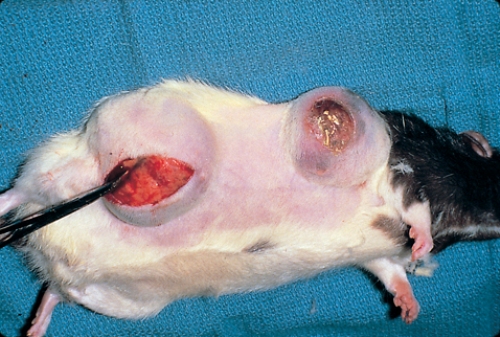Difference between revisions of "Small Mammals Q&A 03"
Jump to navigation
Jump to search
| Line 3: | Line 3: | ||
|- | |- | ||
| align="center" | [[File:Manson_logo.gif|90px|Mansonlogo]] | | align="center" | [[File:Manson_logo.gif|90px|Mansonlogo]] | ||
| − | | align="left" | This question was provided by [[:Category:Manson|Manson Publishing]] as part of the [[OVAL Project]]. See more [[ | + | | align="left" | This question was provided by [[:Category:Manson|Manson Publishing]] as part of the [[OVAL Project]]. See more [[Category: Small Mammals Q&A|Small Mammals questions]] |
|} | |} | ||
<br><br><br> | <br><br><br> | ||
Revision as of 12:03, 16 August 2011
| This question was provided by Manson Publishing as part of the OVAL Project. See more |
A two-year-old female intact pet rat develops these two large tumors on her abdomen:
| Question | Answer | Article | |
| What is your diagnosis and prognosis? |
|
Link to Article | |
| How does this condition in rats compare with that in mice and guinea pigs? | In mice, mammary tumors are frequently malignant, invasive and difficult to remove. They are associated with infection by the mouse mammary tumor virus.
In guinea pigs, about 70% of the mammary gland tumors are benign fibroadenomas and 30% are mammary adenocarcinomas. |
Link to Article | |
| What would you recommend to prevent the occurrence of these tumours in pet rats? | Ovariohysterectomy at a young age may decrease the incidence of mammary gland tumours and can be recommended to owners of female pet rats.
|
Link to Article | |
